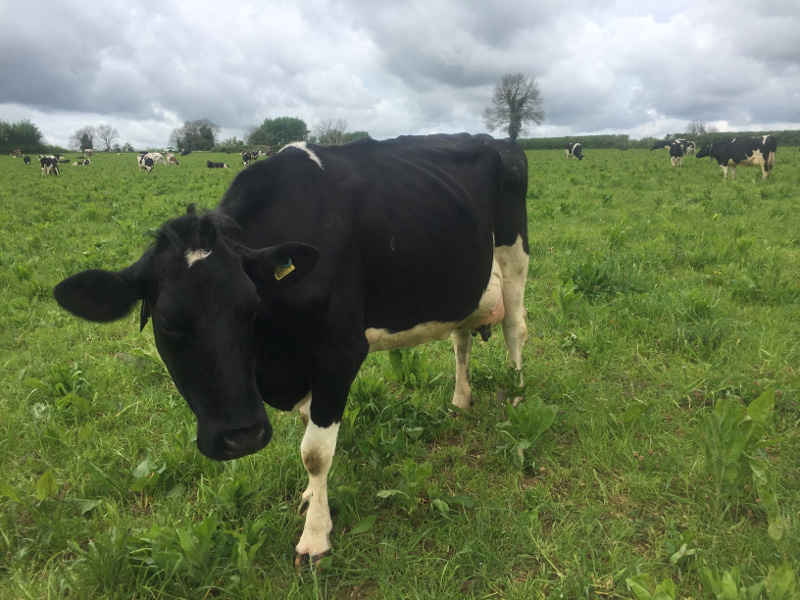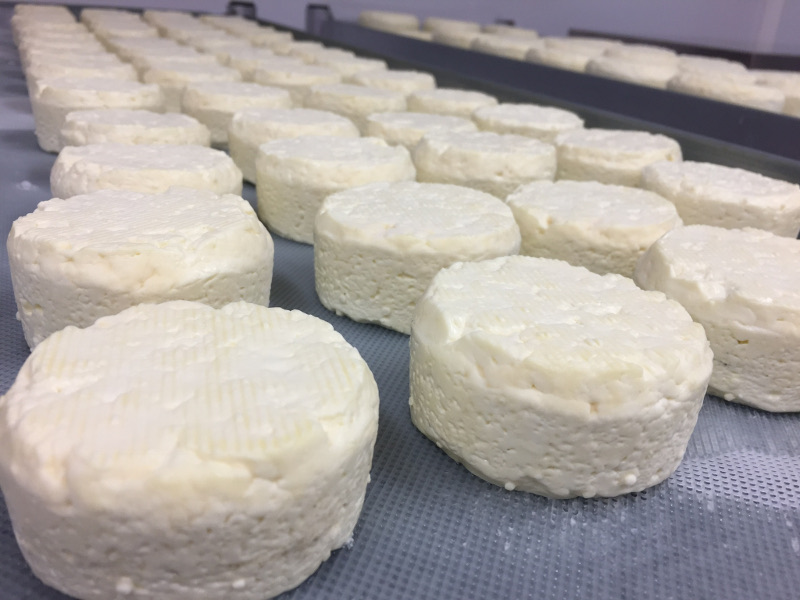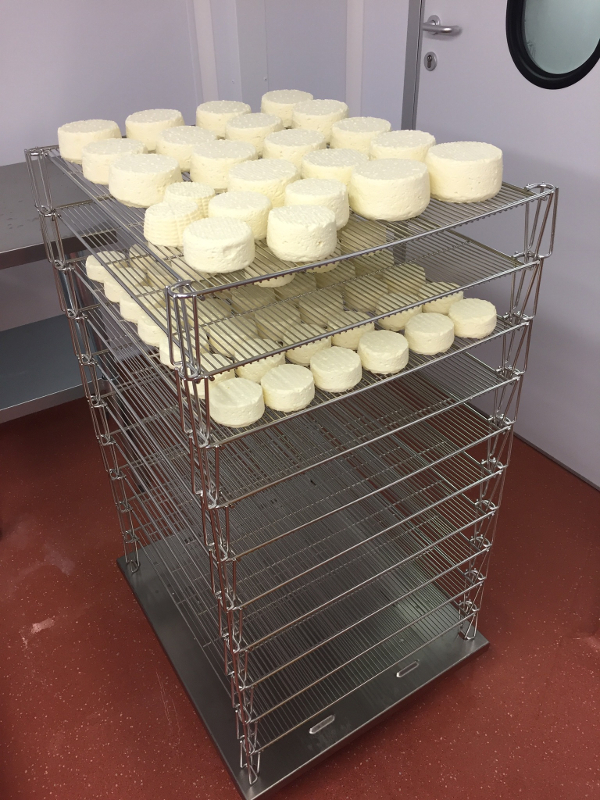making cheese
Our owner Marcus Fergusson taught the Cheesemaking course at River Cottage for two years, only giving up because we got busier on the farm (you can still do his course for River Cottage online here…) Want to know how to make cheese? Well, we can’t tell you everything but here’s a short beginner’s guide.
Milk
It all begins with the best quality milk. Feltham’s Farm is just 22 acres in size, too small to run a dairy herd that could meet our needs, so we buy in our milk. It comes from Bruton Organic Dairy, who run a mixed herd of Swedish Red-and-Whites cross-bred with Friesians to maximise the butterfat content of the milk whilst making the cows less prone to injury on steeper pastures.
Pasteurisation
We then pasteurise the milk. As a soft, blue, rind-washed cheese with a short maturation time, it would be ill-advised to make Renegade Monk with raw milk, which is generally the preserve of slow-aged hard cheeses. Our Italian-made continuous pasteuriser can process 1,000 litres in an hour. The milk is then rapidly cooled down from 72°C before being gently pumped into the vat.
Acidification
The first stage of turning milk from a liquid into a solid is by acidification (fresh milk typically has a very slightly acidic pH of around 6.6). Good bacteria are allowed to consumer the lactose in the milk and turn it into lactic acid. The pasteurised milk is slowly brought back up to 32°C and a starter culture of bacteria is stirred into the milk. We also add a number of ripening cultures at this stage, including Penicillium Roqueforti for a hint of blue. These ripening cultures all contribute to the final taste, texture and appearance of the cheese.
Coagulation
After an hour, rennet is added to coagulate the milk into a solid. Traditionally, rennet is taken from the fourth stomach of an unweaned calf (the enzyme in rennet lets the calf digest milk). However, we prefer to use a vegetarian microbial rennet. The rennet causes the casein (around 80% of the protein in cow’s milk is casein) to precipitate out of the liquid. In effect the butterfat in the milk becomes trapped in a matrix of casein, leading to the formation of curd.
Flocculation
The milk is left to sit without stirring while coagulation occurs. However, the speed of coagulation is tested periodically by dropping a small amount of the milk into a glass of lukewarm water. At first, the milk simply dissolves into the water but at around twenty minutes after the rennet has been added, the milk flocculates into small clumps and appears to drift down like snow. The exact timing will vary owing to the changing nature of the milk through the year and on other factors such as temperature. This flocculation time is then used to calculate the final coagulation time.
Cutting the Curd
Once coagulation has been achieved, the milk in the vat has transformed into a solid, gelatinous mass. The curds are then cut into small, even pieces, to release the liquid whey from the curd. The smaller the pieces of curd, the more whey is released and the firmer and drier the resulting cheese will be. Stirring, followed by a period of sitting, also helps to release more whey.
Moulding
The whey is drained out of the vat. It’s often seen as an unwanted by-product of cheese making (although you can make whey cheeses like Ricotta or, at an industrial level, whey powder for gym bunnies). However, we keep all of our whey to feed to our herd of Oxford Sandy & Black pigs. It sweetens the taste of the pork and ensures that nothing goes to waste. The curds are then hand poured into the cheese moulds, which are perforated all over to allow the whey to continue to drain off. After two hours, the cheeses are firm enough to be taken out of the moulds, turned over and replaced. This is repeated after a further three hours and the cheeses are left to sit in a warm room overnight.
Salting
By the following morning, the pH of the last whey coming from the cheeses will have fallen to around 5. The cheeses are removed from the moulds and placed on draining mats. Salt is rubbed into the top surface of the cheeses. Twelve hours later, the cheeses are turned and the undersides are salted. Salting adds flavour to the cheese, halts the acidification, acts as a preservative and drying agent and helps to develop the cheese rind.
Affinage
After a further 24 hours in a warm room (a process known as hastening), the cheeses are wheeled off to the maturation room. The cheeses will sit here for up to four weeks at a cool 12°C to mature. Temperature and humidity levels are critical and must be carefully monitored. The cheeses are examined every day to see how quickly they are developing. They must be turned regularly to make sure they keep their shape and don’t pancake. We also pierce the cheeses to allow air in, letting the blue mould develop. The cheeses are also washed periodically in ale, to develop the funky and pungent Renegade Monk smell, taste and colour. After four weeks, the cheeses are wrapped and are ready for dispatch.


